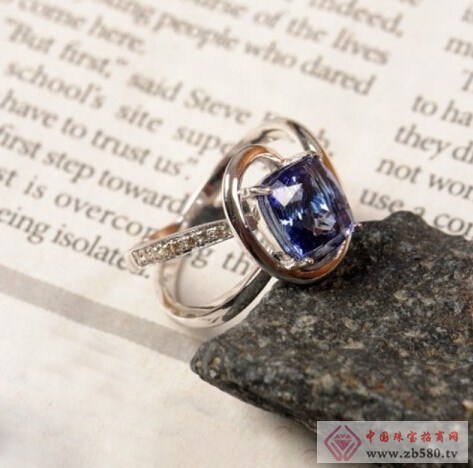When it comes to tanzanite, people who know it will know that it is a new semi-precious gem in the movie "Titanic" as a substitute for the blue diamond "The Heart of the Sea"; people who don't know will also watch Such a gem that is bigger and more dazzling than a typical red sapphire or other semi-precious stones is very popular. Beautiful and large gems are unbearable to ordinary women and even everyone.
Tanzanite was ravaged in Europe in the early 20th century, and it was only in 2013 that it officially entered China, and prices were rising. After more than a year, the price has not stabilized, and the increase has been higher than a wave. In addition to the aesthetic charm, it has also tested the vision. In the summer of 2014, it was time to meet the next big wave of Tanzanite.

Where did you start?
The wave of tanzanite has just begun!
In 2008, the Tanzanite diamond ring designed by an internationally renowned designer at the Sotheby's Spring Auction in Hong Kong was sold for HK$343,500.
In 2011, at the Beijing Poly Autumn Auction, a pair of square natural tanzanite and diamond earrings weighing about 16.7 carats were sold at a price of 253,000 RMB.
In 2012, a 34.82-carat natural tanzanite diamond ring was sold at the Beijing Rongbao Spring Auction, with a transaction price of RMB 138,000.
In 2012, at the spring auction of Beijing Goethe Auction Company, a tanzanite cheetah brooch with a weight of 50.46 carats was sold for 552,000 yuan.
......
Next, in 2013, the wave of tanzanite in China has just begun. Today, in 2014, even though the unit price of tanzanite has been several times higher than that in 2011, the volume is still in all domestic noodles. One of the best in gems.
Still going up?
The price has not risen at all!
According to the latest statistics of the International Colored Gemstone Association, the demand for tanzanite in the world has doubled compared with last year, and especially the emergence of the Chinese colored gemstone market has made the Tanzanite market continue to grow. In 2014, China Tanzanite Demand has increased three-fold compared to previous years, and the relevant personnel of the International Colored Gemstone Association predict that the demand for tanzanite in China will increase even more than last year.
From March this year to the present, in just five months, the sales volume of the domestic tanzanite market has exceeded the total of last year. As a result, not only the price of tanzanite in China is directly proportional to the demand, but also further affects the entire international colored gem market, so that the price of tanzanite can not stop rising internationally.
Seek the essence!
What is tanzanite?
Tanzanite was discovered in Tanzania in Africa in 1967. It is produced at the foot of Kilimanjaro, a world-famous tourist spot near the northern city of Arusha. This is the only place of origin in the world. In 1969, New York-based Tiffany named the jewel, Tanzanite, in the name of the country of origin, and quickly pushed it to the international jewelry market.
If you think that tanzanite is only a substitute for blue diamonds or sapphires, it is an insult to the city of Tanzania, which is now well-known in the world. In layman's terms, tanzanite is a zoi stone with a bright blue-violet tone.
Why is it going to go up?
Tanzanite is so popular!
The matter is rare: the reserves of tanzanite are less than 1/1000 of the diamond. And it is only produced at the foot of Mount Kilimanjaro, which is less than a few square kilometers in Tanzania. The probability of being discovered in other parts of the world is less than one in 100,000.
Rare blue-violet: The special blue-violet color of tanzanite itself is rare in other gemstones. Tanzanite has a faint purple color against a blue background. The main color of tanzanite is the basic color of nature. The sky and the sea are blue. The blue tanzanite makes people look open.
Compared with the blue diamond sapphire, the price is more close to the people: compared to sapphire, the tanzanite particles are large, the crystal is clean, the refractive index is high, the color is sturdy, the price is close to the people, and the sapphire is boring, the refractive index is low, and the clarity is Poor, small particles and expensive.
Seeking identification?
Tanzanite and sapphire are so different!
Hardness test: Sapphire has a Mohs hardness of 9, second only to diamonds. The hardness of tanzanite is 6.5-7, and it can be roughly confirmed whether it is sapphire according to the hardness standard.
Color: When viewing tanzanite from different angles, it will show different colors. Usually, tanzanite will show a blue series change in daylight, and peach and violet will appear under incandescent light. Therefore, there are obvious color changes from all directions of tanzanite, and sapphire has only dichromatic, although this requires professional instruments to observe, but look closely, the difference in color will still be reflected.
Look at the clarity: the tanzanite texture is pure and clear, while the sapphire has a little more impurities.
give face!
Is it true that Tanzanite has become a copy of the object?
Synthetic olivine, specifically, should be synthetic forsterite, which is widely used in industry because of its superior physical properties, but it has only been discovered in recent years for gemstones. Synthetic olivine is very similar to tanzanite, blue-purple pleochroism, strong luster, and very close weight. The biggest difference with tanzanite is that the birefringence is very large, and there is a magnifying glass to observe. From the table top, the ridgeline ghosting of the pavilion is very obvious.
Ningbo Etdz Holdings Ltd , https://www.etdztextile.com